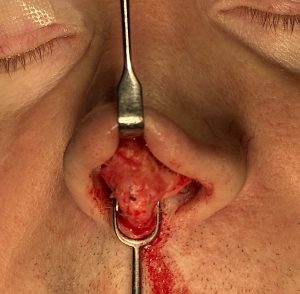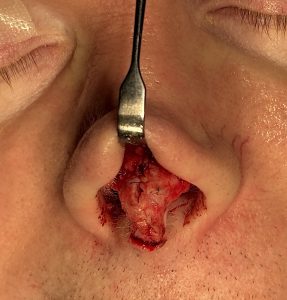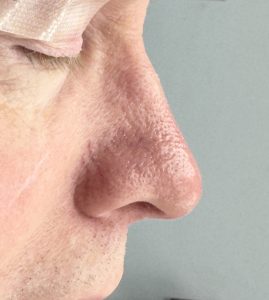Background: Changes to the tip of the nose are a frequent part of many rhinoplasty surgeries. A typical full rhinoplasty incorporates changes from the bony upper part of the nose down through and including the tip of the nose. Contemporary rhinoplasty surgery is based on adding structural support to reshaped areas, particularly the tip, to prevent long term deviations, asymmetries and and other adverse shape changes. This is why very long term nose shape changes can occur even years later as scar tissue contracts and the full effect of the shrink wrap effect occurs.
Despite long term nose shape changes, which may be considered aesthetically undesirable, some patients have had enough improvement that they accept these as reasonable tradeoffs. There often is little appeal of re-opening a nose from a patient’s perspective. But over time, sometimes even a decade or more later, the patient may undergo a renewed desire to make a ‘final’ adjustment. Not uncommonly this is the tip area of the nose.
Secondary reshaping the tip of the nose is very different than the first time. Rather than having subtle and easily manipulated lower alar cartilages…instead they often are a bunch of sutures and scar…having the consistency of a solid bar of soap. Such secondary tip reshaping poses challenges for certain types of changes.
Case Study: This older male had an open rhinoplasty over 20 years ago of which he was pleased with the initial results and considered it a major improvement. But as he got older he became dissatisfied with the tip which he felt had too much droop.
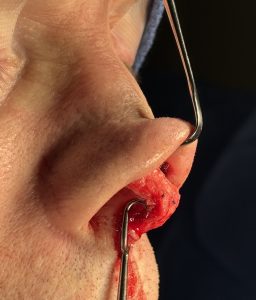
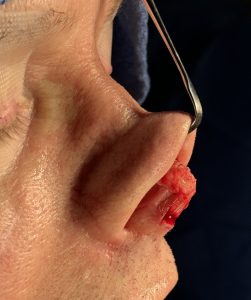
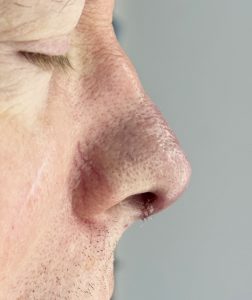
In this case I suspect suspect that the initial tip shape was very acceptable with an aesthetically pleasing 90 degree nasolabial angle for a male. But as he got older the tip was perceived to be drooping and too long. In the spirit of a rejuvenative facial effect lifting and shortening the tip creates isn o a more youthful looking nose shape…even if the nasolabial angle is outside the traditional male standard.
Key Points:
1) While an initial rhinoplasty result may be very satisfactory long term changes may create a need for some further refinements.
2) Secondary reshaping of the scarred tip will be more resistant to traditional suture techniques.
3) Lifting and shortening the scarred tip is done more effectively by en bloc resection and less so by traditional suture reshaping.
Dr. Barry Eppley
World-Renowned Plastic Surgeon




